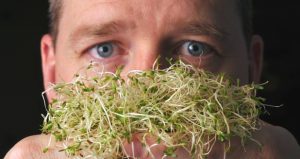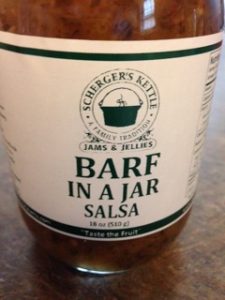Blocking Campy’s ability to latch on
A team at Griffith University in Queensland, Australia, has found a way to disable one sensor of Campylobacter jejuni, that stops it from being able to attach to its host and therefore cause gastroenteritis.
 The findings were published in Nature Communications and show a wide range of possibilities for tackling various strands of gastro, lead researcher Professor Victoria Korolik said.
The findings were published in Nature Communications and show a wide range of possibilities for tackling various strands of gastro, lead researcher Professor Victoria Korolik said.
“We conducted the study in chickens by disabling this particular sensor (CcrG) and we found that it does reduce the level of colonisation,” she said.
“We found this sensor (CcrG) does not occur in all strains of this bacteria, only in about 10 or 11 per cent, but those strains tend to be those isolated from really sick people such as those that have meningitis as a consequence of gastro.”
Professor Korolik described the sensor as a type of “hand” that grabbed onto a specific molecule within the stomach of its host that could lead the bacteria to cells from which to colonise and cause gastroenteritis.
“This sensor grabs a molecule, it grabs it and holds it like you would a ball in your hand and that molecule tells the bacteria they are on the right track and moving towards the right cell,” she said.
“They also have a part that goes inside the cell and sends a signal – to go forward or turn around depending on what is happening.
“Because it can find the human cells efficiently and quickly, it can attack and cause disease.”
Professor Korolik said an antimicrobial drug that acted as a synthetic “ball” could block the sensor and prevent it from finding the cell.
“If you block the hand part of the receptor, the signal is stuck and the bacteria goes around in circle and can’t find its target,” she said.
“If we can design a ‘ball’ that is a better fit than the natural one then we can block the receptor – if the bacteria can’t find its direction because it doesn’t know what else is on the environment because it is blocked and it goes around and around and is eventually passed out.”
Professor Korolik said every bacteria has a variety of sensory structures that are separate from each other which allows one sensor of one bacteria to be targetted without impacting on existing gut flora.
Campylobacter jejuni bacteria is the most common cause of food poisoning in Australia and hospitalised more than 3200 people in 2014, according to Queensland Health.
More than 500 cases have been reported in Queensland in the past month, with the gastrointestinal disease impacting 16,436 across Australia this year so far, according to the national department of health.
Campy in organic and conventional layer chickens
Poultry is a major source of Campylobacter, which can cause foodborne bacterial gastroenteritis in humans. Additionally, poultry-associated Campylobacter can develop resistance to important antimicrobials, which increases the risk to public health. While broiler chickens have been the focus of many studies, the emergence of antimicrobial-resistant Campylobacter on layer farms has not received equal attention. However, the growing popularity of cage-free and organic layer farming necessitates a closer assessment of (1) the impact of these farming practices on the emergence of antimicrobial-resistant Campylobacter and (2) layers as a potential source for the transmission of these pathogens.
 Here, we showed that the prevalence of Campylobacter on organic and conventional layer farms was statistically similar (p > 0.05). However, the average number of Campylobacter jejuni-positive organically grown hens was lower (p < 0.05) in comparison to conventionally grown hens. Campylobacter isolated from both production systems carried antimicrobial resistance genes. The tet(O) and cmeB were the most frequently detected genes, while the occurrence of aph-3-1 and blaOXA-61 was significantly lower (p < 0.05). Farming practices appeared to have an effect on the antimicrobial resistance phenotype, because the isolates from organically grown hens on two farms (OF-2 and OF-3) exhibited significantly lower resistance (p < 0.05) to ciprofloxacin, erythromycin, and tylosin. However, on one of the sampled organic farms (OF-1), a relatively high number of antimicrobial-resistant Campylobacter were isolated.
Here, we showed that the prevalence of Campylobacter on organic and conventional layer farms was statistically similar (p > 0.05). However, the average number of Campylobacter jejuni-positive organically grown hens was lower (p < 0.05) in comparison to conventionally grown hens. Campylobacter isolated from both production systems carried antimicrobial resistance genes. The tet(O) and cmeB were the most frequently detected genes, while the occurrence of aph-3-1 and blaOXA-61 was significantly lower (p < 0.05). Farming practices appeared to have an effect on the antimicrobial resistance phenotype, because the isolates from organically grown hens on two farms (OF-2 and OF-3) exhibited significantly lower resistance (p < 0.05) to ciprofloxacin, erythromycin, and tylosin. However, on one of the sampled organic farms (OF-1), a relatively high number of antimicrobial-resistant Campylobacter were isolated.
We conclude that organic farming can potentially impact the emergence of antimicrobial-resistant Campylobacter. Nevertheless, this impact should be regularly monitored to avoid potential relapses.
Antimicrobial-resistant Campylobacter in organically and conventionally raised layer chickens
Foodborne Pathogens and Disease. September 2016, ahead of print. doi:10.1089/fpd.2016.2161.
Kassem Issmat I., Kehinde Olugbenga, Kumar Anand, and Rajashekara Gireesh
Perilous produce: FDA Import Alert 99-35
This import alert represents the Agency’s current guidance to the Food and Drug Administration (FDA) field personnel regarding the manufacturer(s) and/or product(s) at issue. It does not create or confer any rights for or any person, and does not operate to bind FDA or the public.
 Produce is vulnerable to contamination with pathogenic microorganisms if exposed to insanitary conditions during growing, harvesting, packing, holding, or manufacturing, processing, or transportation. Multiple foodborne illness outbreaks have been linked to produce items that were likely contaminated as a result of insanitary conditions during growing, harvesting, packing, holding, manufacturing, processing, or transportation. Produce is of special concern because in many instances it is consumed without further treatment to adequately destroy or remove pathogenic microorganisms.
Produce is vulnerable to contamination with pathogenic microorganisms if exposed to insanitary conditions during growing, harvesting, packing, holding, or manufacturing, processing, or transportation. Multiple foodborne illness outbreaks have been linked to produce items that were likely contaminated as a result of insanitary conditions during growing, harvesting, packing, holding, manufacturing, processing, or transportation. Produce is of special concern because in many instances it is consumed without further treatment to adequately destroy or remove pathogenic microorganisms.
FDA may document insanitary conditions during an inspection of an establishment that grows, harvests, packs, holds, manufactures, processes, or transports produce. FDA may also use analytical evidence or epidemiological and traceback evidence to establish that a produce item was manufactured, processed, prepared, packed, or held under insanitary conditions.
Guidance:
Districts may detain, without physical examination, produce items from manufacturers, shippers, farms, packers and/or other entities (firms) identified on the Red List of this import alert.
Examples of evidence FDA may use to place a firm on the Red List include:
- Inspectional evidence.
- Epidemiological evidence and traceback evidence. This should include evidence implicating the particular produce item as a vehicle in a foodborne illness outbreak (including positive test results), traceback evidence demonstrating that the firm grows, harvests, packs, holds, manufactures, processes, or transports the implicated vehicle, and expert opinion that the outbreak was likely a result of insanitary conditions at the foreign firm (e.g., contamination likely resulted from insanitary conditions due to the typical modes of transmission of the pathogen implicated in the outbreak) or was related to a resident pathogen or systemic contamination at the foreign firm, or both.
- Analytical evidence. This should include evidence of a resident organism at the foreign firm and/or systemic contamination at the foreign firm, such as an expert opinion that the analytical evidence indicates insanitary conditions at the foreign firm or indicates a resident pathogen or systemic contamination at the foreign firm, or both. Examples include:
* A pathogen that matches an outbreak strain is isolated from an imported produce item;
* Microbial pathogens that are indistinguishable by one or more genetic tests are isolated from two or more lots of imported produce originating from the same foreign firm.
INFORMATION FOR FIRMS REQUESTING REMOVAL FROM THE RED LIST:
In order to be removed from the red list, the firm should submit documentation to FDA demonstrating that the firm has made all relevant corrections to overcome the appearance of adulteration, so that the agency will have confidence that future entries will be in compliance with the Act. Examples of such documentation may include:
- Documentation to show that inspectional observations or violations identified by FDA have been corrected. Firms whose produce items appear to be adulterated based on inspectional evidence should submit detailed descriptions of the specific steps taken to correct the violations along with documentation such as (as applicable) written plans, field records, packinghouse or facility records, training records, and photographs.
- Root cause analysis to identify potential sources and routes of contamination. Firms whose produce items appear to be adulterated based on analytical or epidemiological and traceback evidence should include a detailed root cause analysis to evaluate all aspects of their operations in order to identify potential sources and routes of contamination. The firm should also provide documentation to demonstrate that corrective actions to adequately control the sources and routes of contamination identified in the root cause analysis have been implemented.
 FDA recommends that the firm’s submission be organized according to the following areas, as appropriate to the firm’s practices, processes, and procedures:
FDA recommends that the firm’s submission be organized according to the following areas, as appropriate to the firm’s practices, processes, and procedures:
– Water adequacy for irrigation, agricultural sprays, cooling, and other uses;
– Soil amendment and biosolids;
– Animal management;
– Worker health and hygiene;
– Sanitary facilities, disposal of sewage and silage;
– Equipment cleaning and sanitation;
– Farm or facility sanitation;
– Transportation; and
– Programs to monitor produce safety practices, processes and procedures and to take corrective actions when measures fail or are not fully implemented.
The firm may wish to refer to FDA’s Guidance for Industry: Guide to Minimize Microbial Food Safety Hazards for Fresh Fruits and Vegetables, or similar guidance, to assist them in their root cause analysis and corrective action. Additional guidance for produce, including commodity specific guidance, may be found the FDA website at www.FDA.gov.
Salmonella positive sprouts sold in Ireland
Seán McCárthaigh of The Times reports that EU inspectors auditing food hygiene practices in Ireland found European regulations were being broken, particularly in relation to seeds and sprouts.
 In November last year, four official samples of sprouts tested positive for salmonella. However, the batch was placed on the market without waiting for the final analytical results.
In November last year, four official samples of sprouts tested positive for salmonella. However, the batch was placed on the market without waiting for the final analytical results.
The Department of Agriculture said it had increased controls on businesses involved in the production of sprouts.
The European Food Safety Authority has estimated that food of non-animal origin was associated with 10 per cent of outbreaks of E.coli across the EU between 2007 and 2011; 35 per cent of hospitalisations and 46 per cent of deaths.
It linked leafy greens eaten raw as well as bulb and stem vegetables such as tomatoes and melons with salmonella and fresh pods, legumes and grains with E. coli.
The inspectors said the system of official controls in Ireland on food producers was supported by a well-functioning network of adequately staffed and equipped laboratories.
The EU report found that 13 per cent of registered primary producers of non-animal food were inspected last year.
There are 761 registered producers of fruit, vegetables and potatoes in Ireland as well as 88 producers of leafy green vegetables, 30 producers of soft fruit, 17 producers of sprouted seed, 301 producers of potatoes only and 225 others including 80 mushroom producers.
CFIA suspends organic food processor
Jim Romahn of Agri 007 reports the Canadian Food Inspection Agency (CFIA) has suspended the registration of Establishment 691, Thomas Canning Ltd., of Maidstone, Ont. (Jim also supplied the pic of this real, but unrelated jar of salsa.)
 The company, which says it is the only organic food processor in Ontario, specializes in tomatoes and juices.
The company, which says it is the only organic food processor in Ontario, specializes in tomatoes and juices.
The CFIA “the operator failed to make corrections to three non-compliances identified during an inspection performed in 2014.
Thomas Canning Ltd., will not be allowed to export, trade interprovincially, or apply a Canadian grade mark to products regulated under the Processed Products Regulations until the necessary corrective actions have been implemented and the CFIA has verified that the regulatory requirements can be consistently maintained.”
But go ahead, Ontario, eat up.
From the Salmonella-in-low-moisture-foods file: another tahini product recalled
Although my kids have expanded their food choices beyond pizza, pasta and chicken nuggets, hummus and carrot sticks are still a staple in my house. Salmonella in hummus isn’t a new thing; a Detroit-area grocery store is recalling sesame paste.
A West Bloomfield grocery store has recalled containers of its sesame paste that might be contaminated with salmonella.
Sinbad Foods, located at 6251 Haggerty Road, said in a Tuesday release that 1-pound and 2-pound containers of its Tahina Telkef with “packed on” dates of Oct. 7, 2016, and “sell by” dates of Dec. 5, 2016, are on the recall list.
The 1-pound containers will have the numbers 0200004506472 and 0200004406413 in the barcode. Two-pound containers will have 0200000406295 in the barcode.
The potential contamination was discovered with the Michigan Department of Agricultural and Rural Development conducted tests on a sample of the product.
Mircobiologically speaking: Should you make out with your dog?
“You sleep with your dog? That’s microbiologically sorta gross.”
 That was the first thing I said to Dr. Amy Hubbell, during a seminar in 2005, and I had no idea who she was.
That was the first thing I said to Dr. Amy Hubbell, during a seminar in 2005, and I had no idea who she was.
I also told her organic food was not safer – and probably less safer – than conventional food, and that all that French food was overpriced shit.
Or something like that.
Whether or not such practices are microbiologically gross enters into the domain of how to analyze risk, and how to provide advice. Chapman, Schaffner and I always say variations on the same thing: we ain’t your pastors, you decide what’s right, but here’s some info and you decide.
Christopher Mele of The New York Times writes: beware of too much dog kissing.
Especially if your dog likes to eat poop (coprophagia).
You kiss your mother with that mouth?
Dr. Neilanjan Nandi, an assistant professor of medicine at Drexel University College of Medicine in Philadelphia, said in an email that most animals’ mouths are host to “an enormous oral microbiome of bacteria, viruses and yeast.”
Dr. Nandi says a dog’s saliva has proteins that may help cleanse or heal its own wounds, but in a paragraph titled “Why Not to Make Out With Your Pet,” he noted, “There are some organisms unique to dogs that we were simply not meant to tolerate or combat.”
Some bacteria in dogs’ mouths are zoonotic, meaning the animals can pass them to humans and cause disease.
Some common zoonotic bacteria include clostridium, E. coli, salmonella and campylobacter, which can cause severe gastrointestinal disease in humans, said Dr. Leni K. Kaplan, a lecturer of community practice service at Cornell University’s College of Veterinary Medicine.
 So I shouldn’t let my dog lick me at all?
So I shouldn’t let my dog lick me at all?
Not entirely.
“When dog saliva touches intact human skin, especially in a healthy person, it is extremely unlikely to cause any problems, as there will be very little absorption through the skin,” Dr. Kaplan wrote in an email.
However, a dog’s saliva and pathogens can be absorbed more easily through the mucous membranes of a person’s nose, mouth and eyes. Though illnesses transmitted this way are rare, Dr. Kaplan said it was best to avoid having your dog lick those parts of your face.
John Oxford, a professor of virology at Queen Mary University of London and an expert in microbiology, said he would never let a dog lick his face, The Hippocratic Post reported.
“It is not just what is carried in saliva,” he said. “Dogs spend half of their life with their noses in nasty corners or hovering over dog droppings so their muzzles are full of bacteria, viruses and germs of all sorts.”
Other infections, such as hookworms and roundworms, can be transmitted in a practice called coprophagia, in which animals ingest one another’s stool or by licking each others’ anuses, Dr. Nandi said in an email.
Dr. Joe Kinnarney, the immediate past president of the American Veterinary Medical Association, said in an interview that one study calculated that a puppy could have as many as 20 million to 30 million roundworm eggs in its intestinal tract in one week. He said a client’s child at his practice in Greensboro, N.C., nearly lost an eye from a roundworm infection.
It is conceivable that a dog with fecal material in its mouth could transmit an intestinal parasite to a human through licking, but that is rare, Dr. Sarah Proctor, a clinical assistant professor and the director of the veterinary technology program at the University of New Hampshire, said in an email.
More commonly, a parasite can be contracted by ingesting contaminated soil — via a home garden, for example — where pets have left their droppings.
President Obama even touched on the subject in an interview with Wired magazine that was published in August:
“I still don’t let Sunny and Bo lick me, because when I walk them on the side lawn, some of the things I see them picking up and chewing on, I don’t want that, man,” Mr. Obama said, laughing.
Dr. Proctor says people should be aware that not all dogs want to be hugged or kissed.
“Most people do not pick up on a dog’s subtle body language that shows fear, stress or aggression,” she wrote. “Putting your face into a dog’s face and kissing it could lead to a bite on the face if you are not careful.”
Cats do not eat feces, and humans are therefore unlikely to become infected by parasites from them, according to the website petMD.
Cats’ mouths do harbor Pasteurella, which can cause infections of the skin and lymph node, and Bartonella henselae, a bacterium that can cause a severe skin and lymph node infection known as cat scratch fever, the website reported.
Most of those infections come from bites or scratches.
What precautions should I take?
Experts recommend:
- Make sure your pet is current on all vaccines.
- New pets should undergo deworming.
- Keep your pets away from the feces of other animals.
- Wash your hands regularly with soap and water.
Arden Moore, who hosts “Oh Behave,” a podcast on Pet Life Radio, said in an email that she welcomed the occasional kiss from her five dogs and one cat, and kisses the tops of their heads in return.
“Pets, just like people, crave attention and affection,” she said. “As long as I remain healthy and my pets stay healthy, I will take this ‘risk’ and accept their kisses.”
Restaurant inspection grades suppressed in Bermuda
Sam Strangeways of The Royal Gazette writes that environmental health officials have refused to reveal the health and safety “grades” given to every restaurant in Bermuda.
 The information was requested by The Royal Gazette under the Public Access to Information Act but the Department of Health’s information officer denied our application after consultation with Susan Hill Davidson, the acting Chief Environmental Health Officer, on four grounds.
The information was requested by The Royal Gazette under the Public Access to Information Act but the Department of Health’s information officer denied our application after consultation with Susan Hill Davidson, the acting Chief Environmental Health Officer, on four grounds.
This newspaper sought the information in order to publish a list of all restaurants and their most recent grades, similar to the inspection lookup tool offered by NYC Health.
The New York version enables members of the public to search a database and retrieve health inspection results for each of New York City’s 24,000 restaurants before deciding where to eat.
It also mandates disclosure on the entrance, using letter grades (NY.C. and L.A.) or color grades (Toronto) for example.
In Bermuda, it is estimated there are between 150 and 200 food and beverage premises.
The Department of Health said in its refusal letter that to comply with our request would, “by reason of the nature of the records requested, require the retrieval and examination of such records [and] cause a substantial and unreasonable interference with or disruption of the other work of the public authority”.
Information officer Verlina Bishop wrote that complying with the request would require pulling the inspection records of each individual file of food and drink establishments.
“The files are maintained by street address and are not filed according to food and beverage establishments,” she said. “The environmental health section of the Department of Health does not have the manpower to review and compile the records requested.”
Other reasons given for the refusal to disclose information were that the records contained personal, commercial and confidential information, exempt from disclosure.
It’s a thing: Hemp milk
Marty McCarthy of ABC (the Australian version) reports Stuart Larssons, a soybean grower at Mallanganee in northern New South Wales, wants to produce hemp milk.
 “If you’ve tasted hemp milk it’s a lovely mild product to drink, high in omega sixes and threes, all the good things in there,” Mr Larssons said.
“If you’ve tasted hemp milk it’s a lovely mild product to drink, high in omega sixes and threes, all the good things in there,” Mr Larssons said.
Hemp is a species of cannabis although, unlike marijuana, it has low levels of tetrahydrocannabinol (THC).
Hemp milk is made by crushing the seeds and mixing them with water.
The milk is already sold overseas, although it cannot be sold legally as a food product in Australia yet.
In 2015 food and health ministers in Australia and New Zealand rejected an application by Food Standards Australia New Zealand (FSANZ) to permit the sale of foods made from low-THC hemp seeds.
Authorities were worried about the impact eating or drinking hemp products may have on roadside drug testing.
They also thought legalising hemp seed products would send a confusing message about the safety of its controversial cousin, cannabis.
Commonwealth, state, territory and New Zealand food ministers have asked FSANZ to address these information gaps, and then work on a proposal that would reconsider low-THC hemp being legally designated as a food.
If they do, Mr Larssons, who made a name for himself in the soy milk market, is keen to replicate that success in the hemp milk market.
“It’s like anything new, it has got to be tested and proven there’s nothing wrong with the product, so we’ve just got to wait for what the food authorities say,” he said.
